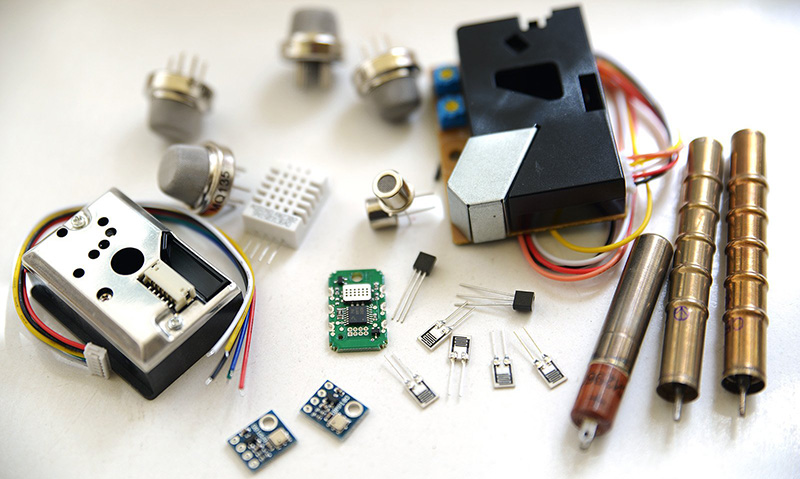There are a lot of environmental monitors in the running for this year’s Hackaday Prize. Whether they’re soil moisture sensors for gardens or ultraviolet sensors for the beach, the entrants for The Hackaday Prize seem to grasp the inevitable truth that you need information about the environment before doing anything about the environment.
But what about sharing that information? Wouldn’t it be handy if there were an online repository where you could look up environmental conditions of any location on the planet? That’s where [radu.motisan]’s Portable Environmental Monitor comes in. It’s a small, pocketable device that measures just about everything and uploads that data to the Internet.
This project is a continuation of [radu]’s entry for The Hackaday Prize last year, the Global Radiation Monitoring Network. This was more than just a Geiger tube connected to the Internet; [radu] has a global network of Geiger counters displaying counts per minute on a nifty live map.
[radu]’s latest project expands on the capabilities of the Global Radiation Monitoring Network with more sensors and portability. Inside the Environmental Monitor are enough sensors to look at Alpha, Beta and Gamma radiation, dust and toxic gas, and other types of pollution. With the addition of an ESP8266 WiFi module, this portable device can upload sensor readings to the Internet, greatly expanding [radu]’s uRADMonitor network.






















WTF is up with greensburg, PA. higher radiation than the us and even Tokyo.
lololololol this?
http://www.baltimoresun.com/business/bs-bz-peach-bottom-leak-20150618-story.html
Tritium is a minor issue from the NRC’s standpoint. It has low bio-activity and a short half life (12.3 years).
Other side of the state and in a completely different watershed. It’s probably radon in Greensburg.
There are massive catfish around Peach Bottom, though. Massive.
Could someone explain the 10x rise is cpm from around 40 cpm to almost 400 in 2 hours? Could it be hardware malfunction? Is it possible for background radiation to change so rapidly?
http://www.uradmonitor.com/data/0.1/public.php?id=1100001C¶m=cpm&start=7&size=xxlarge&integration=1
We don’t have enough data to comment on. It dropped back down, so it is most likely a man made moveable source.
It’s not background, as background does not change like that. It must be some moveable source of some kind, or it could be an increase in the supply voltage to the detector (if it is a Geiger type detector). This is the most probable cause, because the background level does not drop to it’s original level after the event- It drops to a new (lower) value.
“Gamma showers” or “Gamma Ray Events” happen occasionally as high energy cosmic particles decelerate in the atmosphere, but they look different on the detector, and usually only last less than one minute.
Shale is common in coal rich areas in that part of the US. Shale contains higher than average levels of Uranium and Thorium daughter nucleotides, like radium 226.